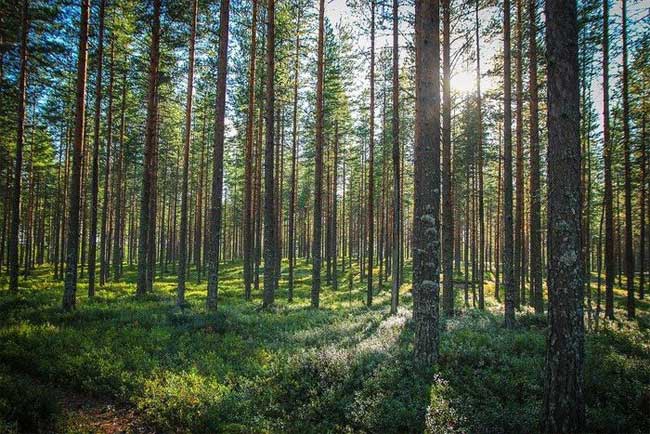Do trees grow faster because of earthquakes?
Earthquakes bring great damage to people and property. However, according to recent research, earthquakes may have helped trees in the valley grow on par with trees on the hillside by receiving more water to the roots.
After an earthquake, hydrologist Christian Mohr of the University of Potsdam and colleagues drilled 20 acres of wood from six Monterey pines along the high to low levels of valleys and mountain slopes.
Each pattern is about the size of a pencil. They analyzed wood core samples under a microscope, tracking how the size and shape of cells in the tree's rings changed as more water was available.
They then measured how the carbon-12 and carbon-13 isotope ratios varied between different cells. Plants absorb more carbon-12 than carbon-13 during photosynthesis, so the variable carbon isotope ratios between cells of different ages signal when photosynthetic activity was sharply increased in the past. These are also times when plants receive more water, as water is the raw material and medium that maintains the conditions for photosynthesis.

Plants absorb nutrients from their roots after each earthquake. (Illustration)
From cell shape and carbon isotope ratios, Mohr's team found, trees at the bottom of the valley experienced a dramatic growth spurt that lasted weeks to months after the Maule earthquake - about the same growth rate. like waves caused by heavy rains. And as originally predicted, trees on hillsides, at higher elevations, grew more slowly after the quake, the team reports in the Journal of Geophysical Research Biogeosciences.
The technique can be used to pinpoint when earthquakes, heavy rains and other events cause short-term growth impacts, says Panyushkina.
Because tree age rings reflect average growth over each year, researchers can only use them to identify earthquakes, volcanic eruptions, and tsunamis within a year range. By combining further cell-level measurements with carbon isotope data, Mohr and colleagues were able to identify the Maule earthquake with month-to-month accuracy.
The next step is to repeat the study in other locations to see if the technique applies to different tree species and climates. In Chile, Monterey pines are often grown on arid soils, which restricts tree growth, making it easier to observe growth spurts with the addition of water.
Mohr also thinks the new technique will be most accurate in relatively arid areas, and with more water the plants will grow more clearly. He plans to repeat the study with tree cores from the Napa Valley in California.
According to Panyushkina, the method could also help historians look back: Identify short-term disturbances like earthquakes that occurred thousands of years ago. Accurate identification of ancient earthquakes and other events impacting groundwater will be 'important for geological, hydrological and social purposes ' , says Panyushkina, 'This study has yielded new techniques and tools'.
- Cause nails grow faster than toenails
- Love so much, don't touch the tree, because they really don't like it
- The technology uses Drone to plant trees, which can grow 100,000 trees in just 1 day
- Female voice helps plants grow fast
- How to grow kumquat trees in the simplest pots
- High living standards make nails grow faster
- Yellow 'grows' on the tree
- American trees die faster because of climate
- Plants grow into furniture shapes
- Trees grow backwards
- Earthquakes caused many local shakes in Thua Thien Hue
- Trees grow fast thanks to the greenhouse effect
 Why do potatoes have eyes?
Why do potatoes have eyes? 'Tragedy' the world's largest carnivorous life: Death becomes ... public toilet
'Tragedy' the world's largest carnivorous life: Death becomes ... public toilet Tomatoes were once considered 'poisonous' for 200 years
Tomatoes were once considered 'poisonous' for 200 years Detecting microscopic parasites on human face
Detecting microscopic parasites on human face